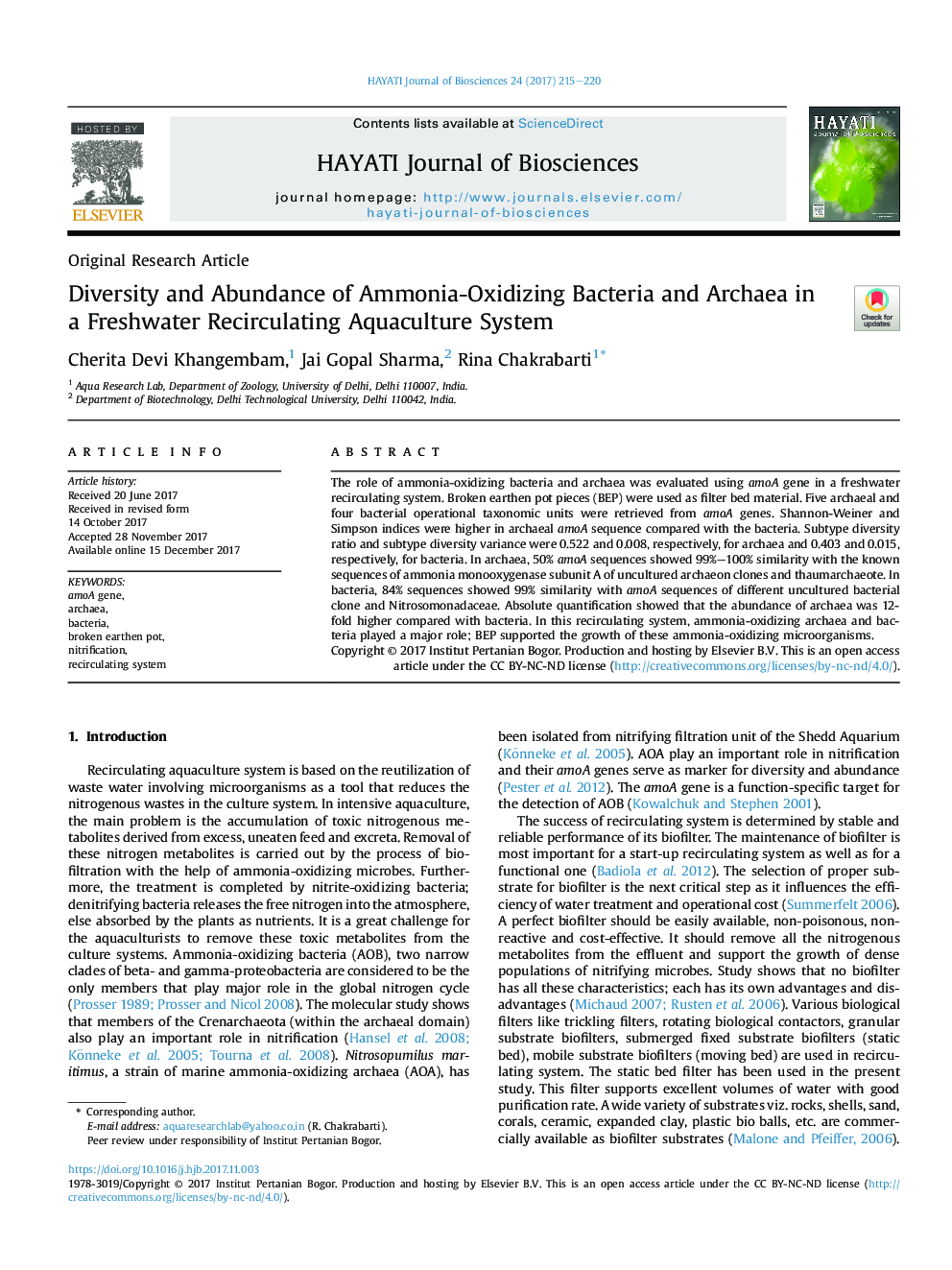| Article ID | Journal | Published Year | Pages | File Type |
|---|---|---|---|---|
| 8415044 | HAYATI Journal of Biosciences | 2017 | 6 Pages |
Abstract
The role of ammonia-oxidizing bacteria and archaea was evaluated using amoA gene in a freshwater recirculating system. Broken earthen pot pieces (BEP) were used as filter bed material. Five archaeal and four bacterial operational taxonomic units were retrieved from amoA genes. Shannon-Weiner and Simpson indices were higher in archaeal amoA sequence compared with the bacteria. Subtype diversity ratio and subtype diversity variance were 0.522 and 0.008, respectively, for archaea and 0.403 and 0.015, respectively, for bacteria. In archaea, 50% amoA sequences showed 99%-100% similarity with the known sequences of ammonia monooxygenase subunit A of uncultured archaeon clones and thaumarchaeote. In bacteria, 84% sequences showed 99% similarity with amoA sequences of different uncultured bacterial clone and Nitrosomonadaceae. Absolute quantification showed that the abundance of archaea was 12-fold higher compared with bacteria. In this recirculating system, ammonia-oxidizing archaea and bacteria played a major role; BEP supported the growth of these ammonia-oxidizing microorganisms.
Related Topics
Life Sciences
Agricultural and Biological Sciences
Ecology, Evolution, Behavior and Systematics
Authors
Cherita Devi Khangembam, Jai Gopal Sharma, Rina Chakrabarti,
